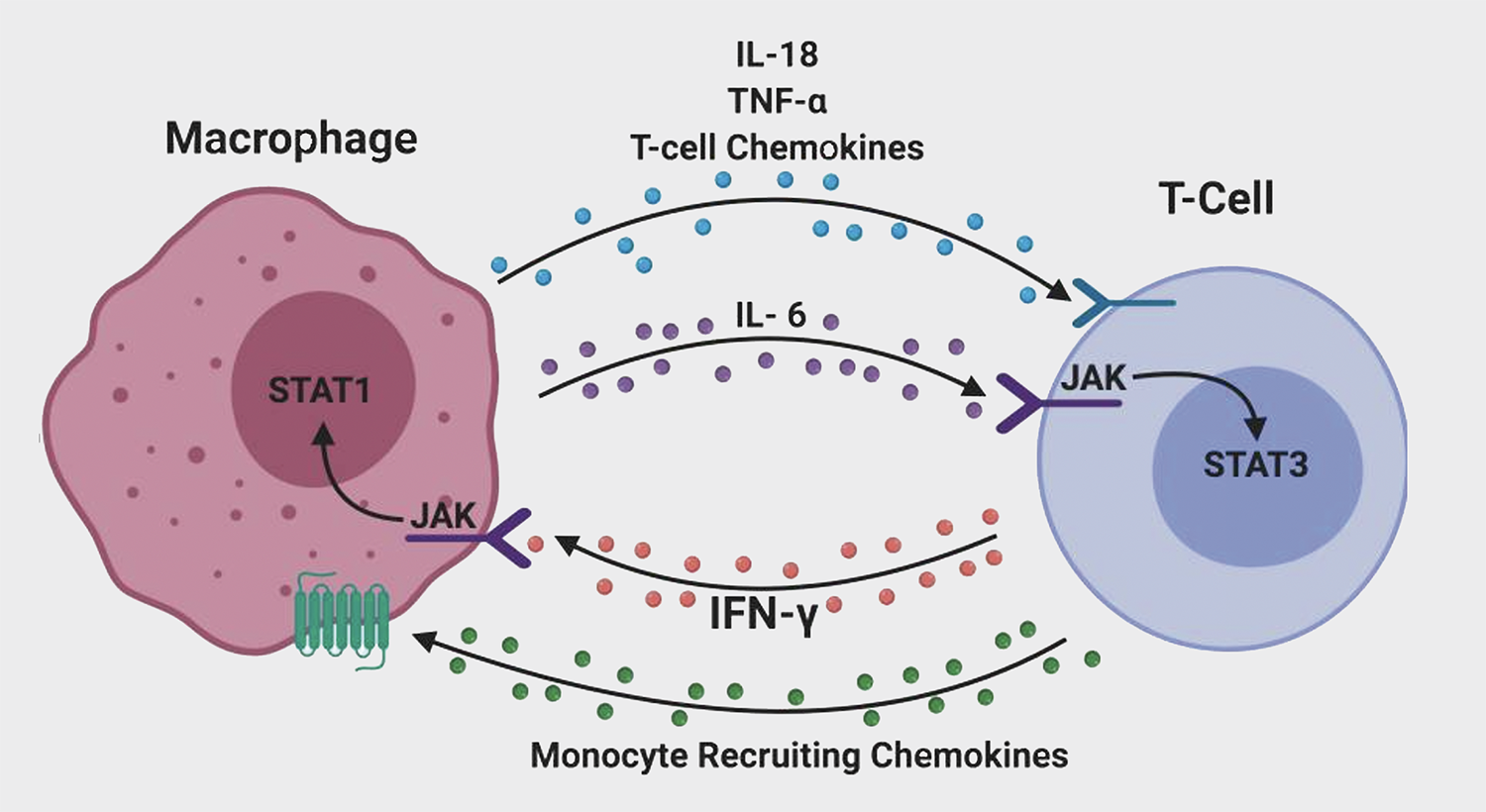Sarcoidosis is an inflammatory disorder of unknown cause characterised by granuloma formation in affected organs, most often in the lungs [1]. It develops in genetically predisposed individuals. The disease course is highly variable and difficult to predict. The typical T cell accumulation indicates that the inflammatory response seen in sarcoidosis is induced by specific antigens. Diagnosis is difficult and symptoms depend on the affected organs. Prof. William Damsky (Yale School of Medicine, CT, USA) pointed out that sarcoidosis can affect nearly any organ, but that lungs and lymph nodes are most frequently affected [2]. Sarcoidosis can be difficult to treat, and prednisone is currently the only approved therapy for sarcoidosis of the lung.
Cutaneous sarcoidosis occurs in about a quarter of patients with systemic sarcoidosis [3]. The most frequent specific (granulomatous) skin lesions are macules and papules, subcutaneous nodules, scar sarcoidosis, plaques, and lupus pernio. For these manifestations, there is no approved treatment. As Prof. Damsky pointed out, many cytokines involved in sarcoidosis pathogenesis are JAK/STAT dependent, in particular IFN-γ. This is the rationale for the use of JAK inhibitors in sarcoidosis. So far, 12 case reports have demonstrated the efficacy of tofacitinib, ruxolitinib, and baricitinib [2]. In addition, in a not yet published, open-label trial, tofacitinib induced marked improvement in skin lesions in 10 patients with longstanding sarcoidosis involving the skin: 6 participants were complete responders and 4 were partial responders.
JAK inhibitors block macrophage activation
IFN-γ along with CD40 ligand (CD40L) appears to play a prominent functional role in the inflammatory polarisation of macrophages and granuloma formation. In turn, macrophages have been shown to produce IL-6, IL-12, IL-18, IL-23, TNF-α, and T cell chemokines [4]. “Most of the involved cytokines signal with the JAK/STAT pathway,” Prof. Damsky said [2]. These mutually reinforcing cytokine programmes likely create a self-sustaining loop perpetuating granulomatous inflammation in the presence of pathogenic antigens (see Figure) [5].
Figure: Pathogenesis of sarcoidosis: molecular mechanisms of macrophage and T cell cross-talk leads to macrophage activation. Most cytokines signal via the JAK/STAT pathway. Thus, JAK/STAT inhibitors might be an interesting therapeutic option [5]

Reprinted from Wang A, et al. Yale J Biol Med 2020;93:187–195. Copyright 2020, with permission from Yale Journal of Biology and Medicine.
Medications that disrupt the cytokine-based communication networks between T cells and macrophages might be an effective treatment approach for these disorders. Preliminary data shows that JAK inhibitors appear to be highly effective in the treatment of cutaneous and internal organ sarcoidosis. Granuloma annulare is a separate granulomatous disease but it has a common underlying pathogenesis. Thus, JAK inhibitors might be highly effective in the treatment of granuloma annulare as well. Larger controlled studies are now needed to better evaluate the efficacy of these agents.
- Grunewald J, et al. Nat Rev Dis Primers 2019;5:45.
- Damsky W. JAK inhibitors for granuloma annulare and sarcoidosis. S032, AAD 2022 Annual Meeting, 25–29 March, Boston, MA, USA.
- Wu JJ, Schiff KR. Am Fam Physician 2004;70:312–315.
- Hilhorst M, et al. Front Immunol. 2014;5:432.
- Wang A, et al. Yale J Biol Med 2020;93:187–195.
Copyright ©2022 Medicom Medical Publishers
Posted on
Previous Article
« Light at the end of the tunnel for vitiligo therapy Next Article
JAK inhibition offers promising treatment prospects for uncommon dermatoses »
« Light at the end of the tunnel for vitiligo therapy Next Article
JAK inhibition offers promising treatment prospects for uncommon dermatoses »
Table of Contents: AAD 2022
Featured articles
Letter from the Editor
Lebrikizumab treatment leads to encouraging outcomes in multiple traits of AD
New Developments and Unmet Needs in Dermatology
Light at the end of the tunnel for vitiligo therapy
Intestinal microbe-preparation: Modest activity but safe for mild psoriasis
Alopecia areata: 1-year baricitinib treatment increases success
New anticholinergic preparation is effective and tolerable in hyperhidrosis
What’s Hot in Rare Diseases
Add-on apremilast may improve recalcitrant dermatomyositis
Could dupilumab put an end to the therapeutic draught in prurigo nodularis?
Fungal skin infections in children: A diagnosis to keep in mind
Innovative gel speeds up clearance of molluscum contagiosum lesions
JAK inhibition offers promising treatment prospects for uncommon dermatoses
JAK inhibitors may offer a new horizon in the treatment of sarcoidosis
Psoriasis: State of the Art
New insights into psoriasis comorbidity
Long-term psoriasis treatment with bimekizumab results in maintained efficacy
Novel developments in topical psoriasis therapy
Atopic Dermatitis: Novel Agents Enter the Stage
JAK inhibitors in AD: Setting the efficacy bar even higher
Lebrikizumab treatment leads to encouraging outcomes in multiple traits of AD
Novel IL-4/IL-13 blocker shows high efficacy with only modest conjunctivitis signal
Posters
Inpatient dermatologic therapy is linked to lower mortality and readmission rates
AD treatment during the pandemic: dupilumab does not raise COVID-19 infection risk
Upadacitinib: Fast and more pronounced skin improvement in AD patients
Dermatology diseases need the highest doses of biologics
Related Articles
November 18, 2021
Treating psoriasis during pregnancies
© 2024 Medicom Medical Publishers. All rights reserved. Terms and Conditions | Privacy Policy

